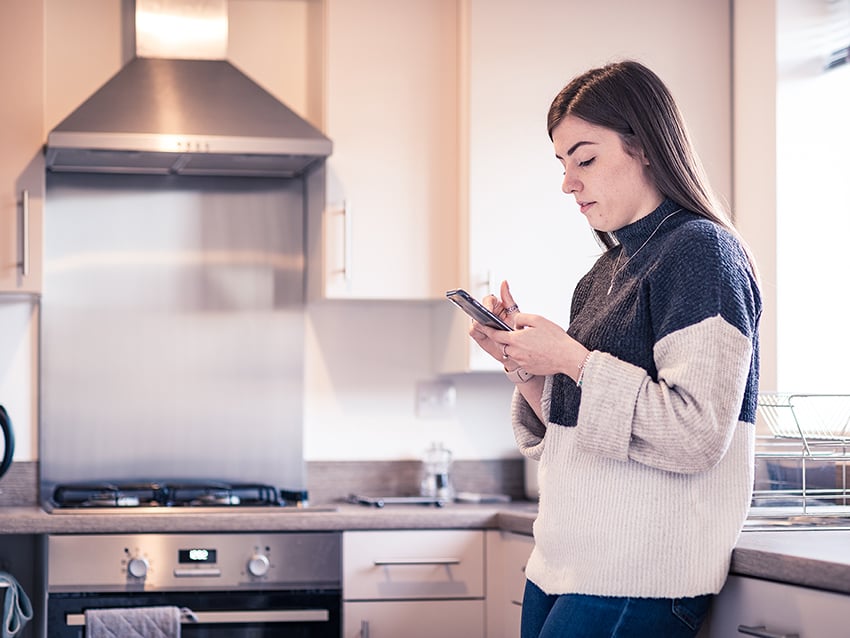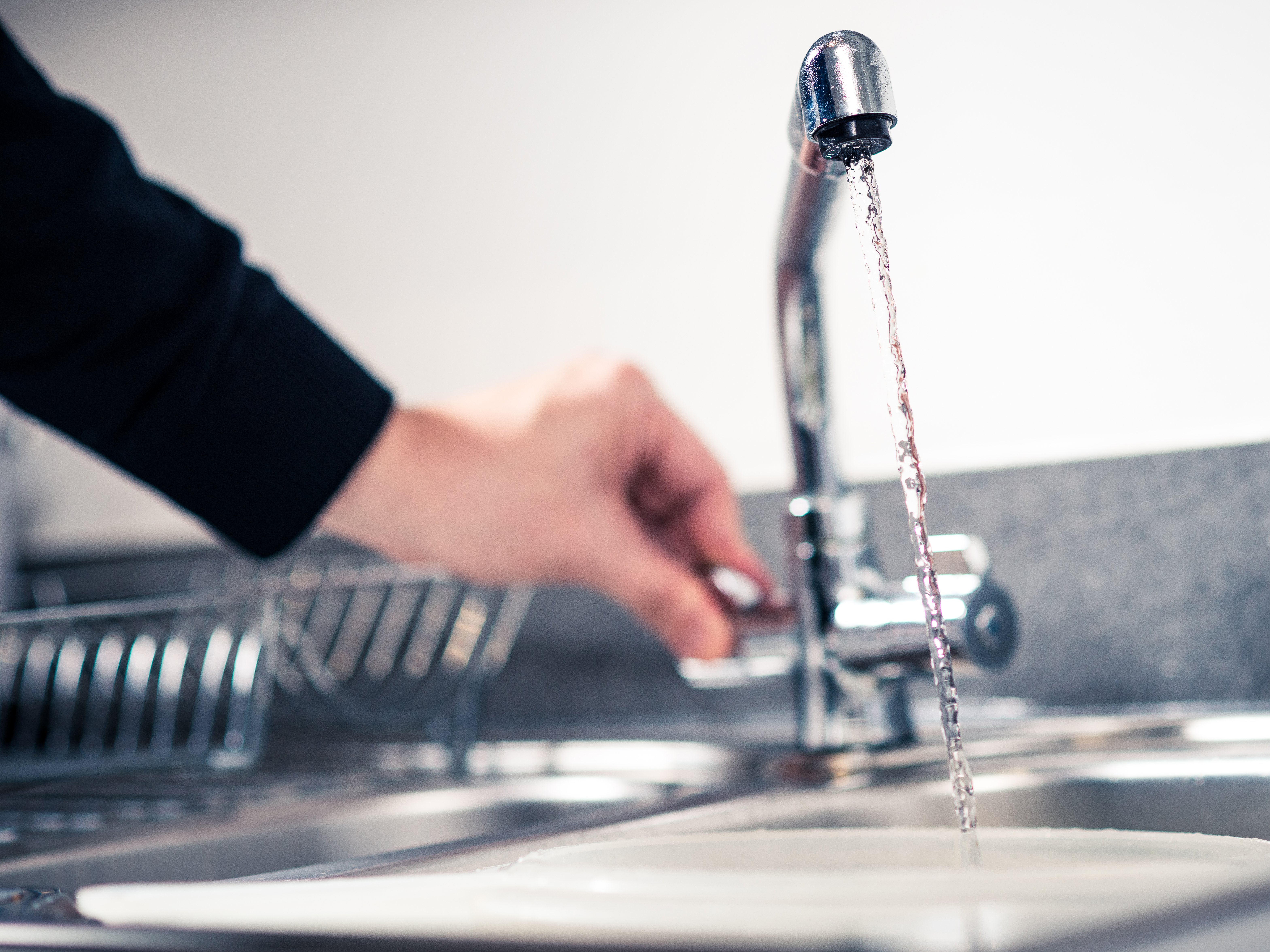
Water pressure is the force that pushes the water through pipes and affects the flow from your tap.
The water pressure in your home can depend on:
- The height of the water reservoir or water tower supplying your home. Properties at the top of a hill may receive lower pressure than those at the bottom.
- How close you live to our water pumps.
- The time of day. Your pressure may be lower in the morning and evening when more people are taking baths and showers. It will also vary if you have multiple taps, appliances and showers running at the same time.
Some modern heating appliances and power showers won't work below certain pressure levels, so make sure your plumber checks your internal pressure before installation.
Low water pressure?
If you're experiencing low pressure, there are some simple checks you can do yourself to help work out what and where the issue is:
1. Check your internal stop tap is open
One of the first things to check is the condition of your internal stop tap and how well it is working.
With your cold water kitchen tap on, check the stop tap is fully open by turning it off (turn clockwise!) then back on (turn anti-clockwise) a few times. When your stop tap is fully open, turn it clockwise half a turn to avoid it sticking or locking in place. If the stop tap isn't fully open, it can restrict the flow of water and cause low pressure.
The location of your stop tap can be different from home to home - most are under the kitchen sink, but we know some are in the bathroom or in the boiler cupboard too.
If you have more than one stop tap, there's usually a main stop tap that turns off the water to the whole property. If you're a tenant and don’t know where your main stop tap is, your landlord should be able to help you.
In properties older than 1970, you may notice the stop tap is on a dull grey metal pipe. This is probably lead and we recommend you consider replacing this pipe work. When using water from lead pipes for drinking or cooking, run the cold tap for a few seconds to clear any old water away.
If you're not sure about the amount of lead in your tap water, we'll test a sample of your water for free. Call 0345 782 0999 to book a free test.
2. Check your isolation valves
You might also have an isolation valve inside your home. You might see them attached to domestic appliances like the dishwasher or washing machine.
It's worth checking your isolation valve as it may have been adjusted. Just like with the stop tap, fully turn it off, and then fully open it up again.
3. Ask your neighbours
Ask your neighbours if they are experiencing the same issue. If they are, it's likely there is a problem or repair going on in your area, which may affect your supply
You can also get more information on what's going on in your area here.
4. Check our map for work in your area
Check our map to see if there is any work going on around you. We may be carrying out an emergency repair.
Our water network is a maze of pipes, so if we're working a mile away, it might still affect your supply.
You can get regular updates on work in your area by subscribing to text alerts. Log into your online account to check we have your mobile number and it's up to date.
5. Check for a leak
A leak in your home can cause a loss in pressure and reduced flow of water.
There are tests you can do to check if you have a leak.
If you think you have a leak, you'll need to a WaterSafe approved plumber to investigate and repair the leak for you.
We must provide a minimum water pressure of 10 meters head (1 bar), and a flow rate of at least 9 litres a minute at your property boundary. This means, you should be able to fill a 4.5 litre container in 30 seconds, so it's perfect for your daily water needs.
High water pressure?
If your pressure is too high, use your internal stop tap or isolation valves to lower it to suit you.
You can also get in touch with a WaterSafe approved plumber. They'll be able to install a pressure-reducing valve.
Report a problem
If you're still experiencing issues with your water pressure, you can report it online
Report it online

